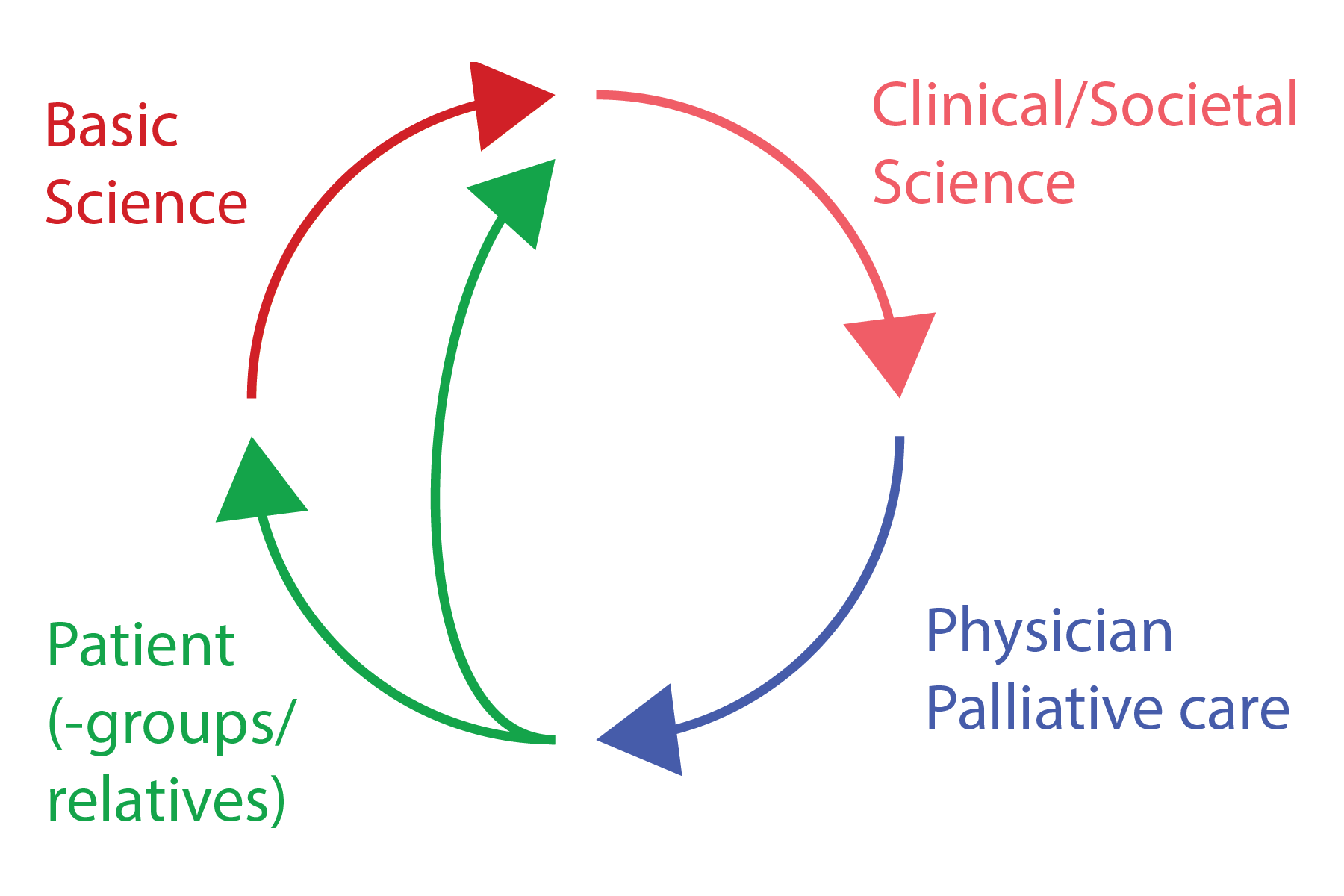Cachexia is a multi-organ syndrome which is associated with involuntary body weight and skeletal muscle loss and can present with and without simultaneous fat wasting. It is commonly found in the terminally-ill patients across a wide range of disease etiologies including cancer, autoimmune diseases and chronic infections1-6.
It severely impacts the quality of life of the affected patients and their social environment. Despite the death of millions of patients attributed to cachexia, early diagnostics and targeted therapies remain unavailable.
A central challenge of cachexia is its broad impact on multiple biological systems, involving many (if not all) biomedical research areas such as cancer research, immunology, metabolism, organ crosstalk, imaging, neurosciences and psychology.
What is Vi-CaN and its mission?
Vi-CaN is a collaborative research network uniting preclinical and clinical researchers to advance understanding of and find solutions to the wasting-syndrome called “cachexia”. We foster a community-driven platform to leverage synergies across preclinical models, patients and health sociology to accelerate impactful patient-oriented discoveries and innovations in cachexia research. Together, we strive to bridge gaps and create meaningful advancements for this critical area of unmet medical need with the goal to improve patient survival and their quality of life.
How do we operate?

Vi-CaN is designed in a transdisciplinary framework to involve different stakeholders from basic and clinical scientists, primary and palliative care physicians to stakeholders affected by cachexia such as patient, patient groups and relatives. In an open forum, Vi-CaN will have regular bimonthly scientific meetings bringing together scientists and stakeholders under a variety of topics related to cachexia. We will use transdisciplinary approaches to crystallise patient-centric needs and formulate research questions directly addressing these. In such a fashion, Vi-CaN strives to develop new research projects at the Medical University to research pressing issues in the field of cachexia research. By providing an essential platform for preclinical and clinical researchers to connect expertises, we hope to accelerate the science and start new research projects with keeping the patient at its center.
How can you get involved?
Sign up to our email mailing list and join our regular Vi-CaN meetings, which will take place on the last Monday of every second month at 3pm in the 8th floor large seminar room of the CeMM Research Center for Molecular Medicine of the Austrian Academy of Sciences (Lazarettgasse 14, AKH BT25.3). Meeting topics will be announced in advance. The dates for 2025 are:
- 24th Feb 2025: Kick-off Meeting
“What is cachexia and how ‘Vi-CaN’ make a difference?” - 28th April 2025: 2nd Regular Meeting
"Visualisation methods of cachexia in clinical and preclinical research"
(Chrysoula Vraka, PhD & Cecile Philippe, PhD) - 30th June 2025: 3rd Regular Meeting
"Molecular mechanisms driving tissue atrophy in mouse models of cancer associated cachexia"
(Prof. Dr. Martina Schweiger, University of Graz) - 29th Sept 2025: 4th Regular Meeting
"Diagnostic Features of Cancer-Associated Cachexia: A lack of consensus"
(Dr. Lynn Gottmann) - 24th Nov 2025: 5th Regular Meeting
"Cachexia Through the Clinical Lens: Science Meets the Patient Voice"
(Dr. Eva Masel, Elisabeth Hütterer, Michael Binder)
Dates for the bimonthly regular Vi-CaN meetings and the 1st Vi-CaN Symposium in 2026 will be announced shortly.
Vi-CaN Coordination Team
- Andreas Bergthaler (Institute of Hygiene and Applied Immunology, Dept. Pathophysiology, Infectiology and Immunology)
- Anna Berghoff (Division of Oncology, Dept. Internal Medicine I)
- Cécile Philippe (Division of Nuclear Medicine, Dept. Biomedical Imaging and Image-guided Therapy)
- Eva-Katharina Masel (Division of Palliative Medicine, Dept Internal Medicine I)
- Felix Richter (Institute of Hygiene and Applied Immunology, Dept. Pathophysiology, Infectiology and Immunology)
References
[1] Argilés, J.M., López-Soriano, F.J., Stemmler, B. et al. Cancer-associated cachexia — understanding the tumour macroenvironment and microenvironment to improve management. Nat Rev Clin Oncol 20, 250–264 (2023). https://doi.org/10.1038/s41571-023-00734-5
[2] Baazim, H., Antonio-Herrera, L. & Bergthaler, A. The interplay of immunology and cachexia in infection and cancer. Nat Rev Immunol 22, 309–321 (2022). https://doi.org/10.1038/s41577-021-00624-w
[3] Ferrer, M., Anthony, T.G., Ayres, J.S. et al. Cachexia: A systemic consequence of progressive, unresolved disease. Cell (2023). https://doi.org/10.1016/j.cell.2023.03.028
[4] Lok, C. Cachexia: The last illness. Nature 528, 182–183 (2015). https://doi.org/10.1038/528182a
[5] Baracos, V., Martin, L., Korc, M. et al. Cancer-associated cachexia. Nat Rev Dis Primers 4, 17105 (2018). https://doi.org/10.1038/nrdp.2017.105
[6] Arends, J., Strasser, F., Gonella, S. et al. Cancer cachexia in adult patients: ESMO Clinical Practice Guidelines. ESMO Open (2021) doi: https://doi.org/10.1016/j.esmoop.2021.100092